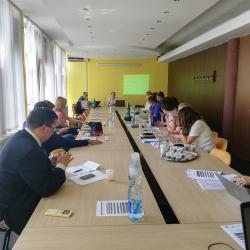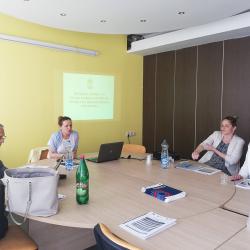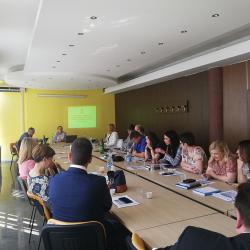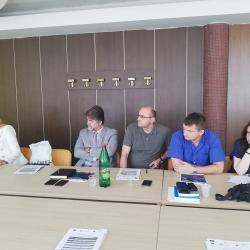Money-laundering risk assessment – Methodology of work and the findings
Money-laundering risk assessment – Methodology of work and the findings - Source: Judicial Academy
The training was attended by judges and prosecutors of the Novi Sad Appellate Court jurisdiction, as well as the law enforcement – anti-corruption deparment, and the topics discussed during this training included:
- Presentation of the money laundering risk assessment – FAFT recommendations – the system for the prevention of money laundering and terrorism financing – the methodology, time schedule and organization of work.
- Presentation of the Project on Enhancing the quality and efficiency of suspicious transactions reporting (STR) and core functions of the Administration for the Prevention of Money Laundering (APML);
- Money laundering threat assessment – working group for money laundering threat assessment;
- Vulnerability assessment of the national system to money laundering;
- Vulnerability assessment of the financial sector to money laundering – working group for vulnerability assessment of the financial sector to money laundering;
- Vulnerability assessment of non-financial sector to money laundering – working group for vulnerability assessment of non-financial sector to money laundering;
- Presentation of the Action Plan for the implementation of money laundering and terrorist financing risk assessment.
The lecturers on this training were: Jelena Pantelić, National Risk Coordinator of the Administration for the prevention of Money Laundering; Hickey Wendorf, Project Team Leader; Miljko Radisavljević, Deputy Republic Public Prosecutor; Jasmina Ganić-Milanović, Deputy Prosecutor for Organized Crime; Milica Todorović, the Ministry of Justice; Milunka Cvetković, a judge of the Supreme Court of Cassation; Aleksandra Medan, the National Bank of Serbia; Vladislav Stanković, Securities Commission; Danijela Tanić-Zafirović, Administration for the Prevention of Money Laundering, and Mirko Šuković, Secretary of the Coordination body.






